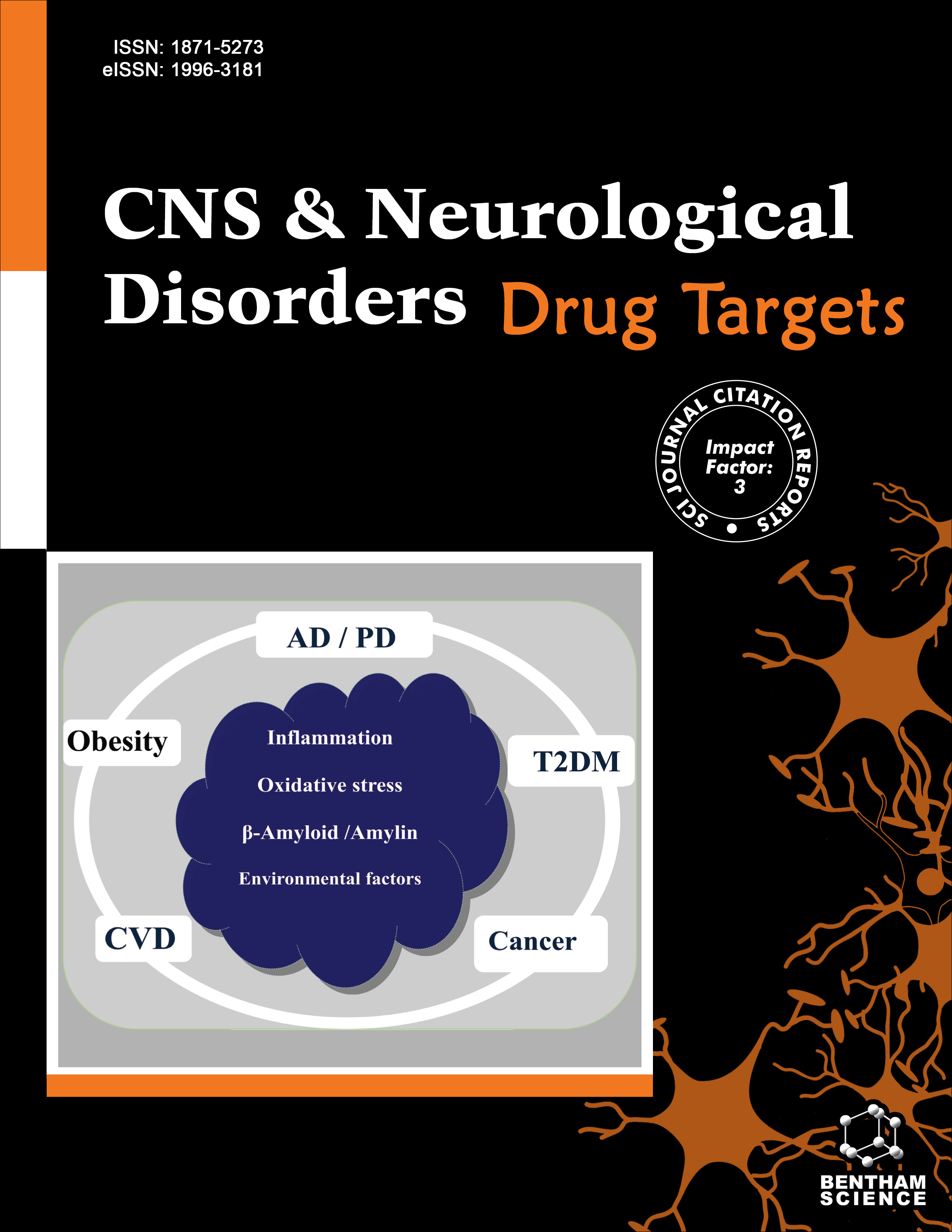- Home
- A-Z Publications
- CNS & Neurological Disorders - Drug Targets (Formerly Current Drug Targets - CNS & Neurological Disorders)
- Previous Issues
- Volume 5, Issue 6, 2006
CNS & Neurological Disorders - Drug Targets (Formerly Current Drug Targets - CNS & Neurological Disorders) - Volume 5, Issue 6, 2006
Volume 5, Issue 6, 2006
-
-
Editorial [Hot Topic: T-Type Calcium Channels in Health and Disease (Guest Editor: Slobodan M. Todorovic)]
More LessVoltage-gated calcium (Ca2+) channels are heteromeric complexes found in the plasma membrane of virtually all cell types and show a high level of electrophysiological and pharmacological diversity. On the basis of the membrane potential at which they activate, these channels are subdivided into high voltage-activated (HVA) and low voltage-activated (LVA) or transient (Ttype) Ca2+ channels. These channels in nerv Read More
-
-
-
The Role of T-Channels in the Generation of Thalamocortical Rhythms
More LessThe presence of T-channels in thalamic cells allows for the generation of rhythmic bursts of spikes and the existence of two firing modes in thalamic cells: tonic and bursting. This intrinsic electrophysiological property has fundamental consequences for the functional properties of the thalamus across waking and sleep stages and is centrally implicated in a growing number of pathological states. Rhythmic bursting brings about hi Read More
-
-
-
Pharmacology and Drug Discovery for T-Type Calcium Channels
More LessVoltage-gated calcium channels are found in the plasma membrane of many excitable and non-excitable cells. When open, they permit influx of calcium, which acts as a second messenger to initiate diverse physiological cellular processes. Ten unique α 1 subunits, grouped in three families (CaV1, CaV2, and CaV3), encode biophysically and pharmacologically distinct low-voltage-activated T-type and high-voltage-activated L-t Read More
-
-
-
Molecular Biology of T-Type Calcium Channels
More LessAuthors: E. Perez-Reyes and P. LoryThis review summarizes recent progress on the molecular biology of low voltage-gated, T-type, calcium channels. The genes encoding these channels were identified by molecular cloning of cDNAs that were similar in sequence to the α1 subunit of high voltage-activated Ca2+ channels. Three T-channel genes were identified: CACNA1G, encoding Cav3.1; CACNA1H, encoding Cav3.2; and CACNA1I, encoding Cav3.3. Recent Read More
-
-
-
Modulation of Neuronal T-Type Calcium Channels
More LessAuthors: R. C. Lambert, T. Bessaih and N. LerescheAs T-type calcium channels open near resting membrane potential and markedly influence neuronal excitability their activity needs to be tightly regulated. Few neuronal T-current regulations have been described so far, but interestingly some of them involve unusual mechanisms like G protein-independent but receptor-coupled modulation, while the use of recombinant channels has established both a direct action of Gβ Read More
-
-
-
Genetic Studies on the Role of T-Type Ca2+ Channels in Sleep and Absence Epilepsy
More LessAuthors: Hee-Sup Shin, Jungryun Lee and Inseon SongThalamocortical neurons in mammals fire action potentials in two different modes, burst or tonic, depending on the cellular state. The burst firing is driven by the low threshold Ca2+ spike that is generated by Ca2+ influx through T-type Ca2+ channels, and has long been implicated in the pathogenesis of absence epilepsy and the regulation of sleep rhythms. The recent availability of the knock-out mice for theα1G locus, e Read More
-
-
-
The Role of T-Type Calcium Channels in Peripheral and Central Pain Processing
More LessAuthors: Slobodan M. Todorovic and Vesna Jevtovic-TodorovicIt is well established that the voltage-gated calcium (Ca2+) channels can modulate neuronal activity in the peripheral and central nervous system causing a variety of behavioral and neuro-endocrine changes in humans and animals. While much attention was focused on the modulation of high voltage-activated (HVA)-type Ca2+ channels, the role of low voltage-activated (LVA) or transient (T) type Ca2+ channels in sensory proc Read More
-
-
-
Density is Density - On the Relation Between Quantity of T-Type Ca2+ Channels and Neuronal Electrical Behavior
More LessThe electroresponsiveness fingerprint of a neuron reflects the types and distributions of the ionic channels that are embedded in the neuronal membrane as well as its morphology. Theoretical analysis shows that subtle changes in the density of channels can contribute substantially to the electroresponsive fingerprints of neurons. We have confirmed these predictions, using the dynamic clamp approach to emulate changes Read More
-
Volumes & issues
-
Volume 24 (2025)
-
Volume 23 (2024)
-
Volume 22 (2023)
-
Volume 21 (2022)
-
Volume 20 (2021)
-
Volume 19 (2020)
-
Volume 18 (2019)
-
Volume 17 (2018)
-
Volume 16 (2017)
-
Volume 15 (2016)
-
Volume 14 (2015)
-
Volume 13 (2014)
-
Volume 12 (2013)
-
Volume 11 (2012)
-
Volume 10 (2011)
-
Volume 9 (2010)
-
Volume 8 (2009)
-
Volume 7 (2008)
-
Volume 6 (2007)
-
Volume 5 (2006)
Most Read This Month
Article
content/journals/cnsnddt
Journal
10
5
false
en

Most Cited Most Cited RSS feed
-
-
A Retrospective, Multi-Center Cohort Study Evaluating the Severity- Related Effects of Cerebrolysin Treatment on Clinical Outcomes in Traumatic Brain Injury
Authors: Dafin F. Muresanu, Alexandru V. Ciurea, Radu M. Gorgan, Eva Gheorghita, Stefan I. Florian, Horatiu Stan, Alin Blaga, Nicolai Ianovici, Stefan M. Iencean, Dana Turliuc, Horia B. Davidescu, Cornel Mihalache, Felix M. Brehar, Anca . S. Mihaescu, Dinu C. Mardare, Aurelian Anghelescu, Carmen Chiparus, Magdalena Lapadat, Viorel Pruna, Dumitru Mohan, Constantin Costea, Daniel Costea, Claudiu Palade, Narcisa Bucur, Jesus Figueroa and Anton Alvarez
-
-
-
- More Less

